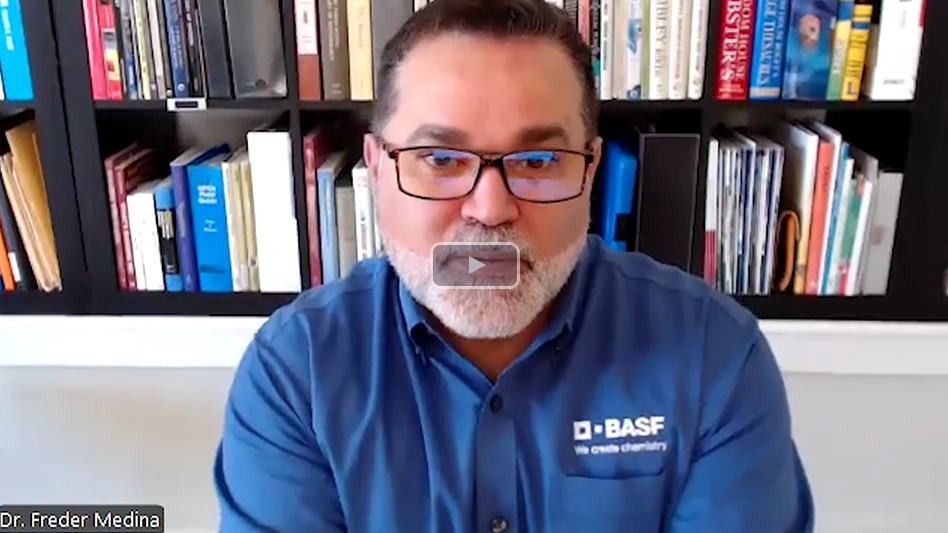Last summer’s outbreak of West Nile virus throughout much New York City and the surrounding boroughs shared much with the recent outbreak of St. Louis encephalitis in northeast Louisiana: the disease vectors were mosquitoes, dozens of victims were infected, several victims succumbed to their ailments and the control efforts in both locations spawned litigation. The circumstances of the litigation in the respective cases underscore a truism of not only pest management, but of life in general.
CATCH 22. In the New York area in 2000, where 62 people were hospitalized and seven died from WNV, action response standards and aerial application control efforts came under the scrutiny of environmental groups and lobster fishermen. In a lawsuit filed by the New York Public Interest Research Group, environmental activists disputed the standards set by the Centers for Disease Control and Prevention (CDC) that triggered spraying programs. According to the CDC, aerial and truck-mounted programs are appropriate for a two-mile radius of a single infected “sentinel” bird or trapped mosquito.
In an attempt to injunction the control program, environmental activists claimed that the CDC standard was “overkill” and that the products used in control efforts endangered people more than the threat of disease. New York public officials, responding the overwhelming public apprehension to spread of disease, successfully fought the injunction and implemented the program. In several press conferences, New York’s former Mayor Rudy Giuliani addressed WNV and the city’s successful control program. New York public health officials were compelled to use what means were available to protect the public, regardless of the legal actions of environment activists groups.
Lobster fishermen operating in the Long Island Sound blamed mosquito control program products and their manufacturers for a reduction in their catch last summer. In a federal class action lawsuit, lobstermen named manufacturers Cheminova Inc. and Clark Industries as defendants, claiming that the companies withheld information on the potential environmental damage that their organophosphate and pyrethroid products could do. In an Associated Press article, Allan Van Wagner, a technical manager for Cheminova, said that the suit “had no merit.”
New York lobstermen are seeking $125 million in damages. They claim that their catch has been reduced by more than 30 percent in the past three years, and they allege in their lawsuit that the direct cause is the spraying program enacted by New York public health officials (who, by the way, were not named in the suit).
Environmental officials have yet to agree with the lobstermen’s assertion of direct causality, and are weighing other factors for the reduced catch. These environmental factors include agricultural and urban fertilizer runoff, low oxygen water levels, unfavorable water temperatures, undiscovered pathogens or parasites, disruptions in the food chain and over-fishing of lobster stock-all of which, alone or in combination, can reduce reproductive potential for lobster populations. As of press time, the lawsuit has yet to be settled.
ANOTHER EXAMPLE. In the northeast Louisiana city of Monroe, mosquito-related litigation took another form: a pest control operator, privately contracted for mosquito control, and the Ouachita Parish Police Jury (a governmental subdivision comparable to county government) are being sued, not for “environmental damage” resulting from the application of pesticides, but for the failure to control the spread of St. Louis encephalitis.
In the summer of 2001, 67 human cases and three deaths in the Ouachita Parish area were attributed to the St. Louis strain of encephalitis. Louisiana Gov. Mike Foster declared a state of emergency, activating the National Guard to assist in control efforts. Ouachita Parish officials spent more than $1.4 million for public and private control efforts.
Several Ouachita Parish residents have named the Ouachita Parish Police Jury and Mosquito Control Incorporated (MCI) in a lawsuit filed in Louisiana District Court, claiming the defendants are responsible for their infection with St. Louis encephalitis or their suffering from “mental anguish” brought on by fear of the disease. In one case, a resident is suing on behalf of his horse, which died from the disease. The suit claims that the Parish Police Jury, once it learned of the presence of the disease, failed to act promptly to protect public health.
Attorneys representing the plaintiffs are seeking “class action” status for the lawsuit, which, if granted, could bring exponential expansion in the number of litigants and the potential costs of the suit.
During the height of the outbreak last summer, a CDC official criticized the control efforts of private contractor Mosquito Control Inc. CDC entomologist Henry Savage indicated that control efforts should have included more trapping and identification of potentially infected mosquitoes and recommended a change in the use of products. Savage advised Parish officials and MCI that spraying should be done with Dibrom, rather than Anvil, and that the spray rate be at the high end of the label rate. Although Wayne Marchado, entomologist and general manager of MCI, disagreed with the assessments of the trapping portion of the company’s control program, MCI accepted the product recommendations of the CDC official.
Parish officials requested an inspection by the Louisiana Department of Agriculture and Forestry, which licenses and regulates mosquito control in the state. The subsequent report found no violations of label directions or state regulations.
These examples of ongoing litigation demonstrate that public officials or private companies, and their actions or inactions, are easy targets of a lawsuit.
Should our public officials spray or not spray? Should our society accept a certain seasonal level of human infection of potentially deadly diseases? Should our juries award monetary damages based on the fear of “catching something”? These questions reinforce the old axiom that “No good deed goes unpunished.”
The author is vice president of marketing for LIPCA Insurance Group, Baton Rouge, La. LIPCA Insurance Group is owned by pest control operators and provides specialized commercial insurance coverage exclusively for PCOs. He can be reached at afugler@pctonline.com.
|
ONLINE ONLY: The Latest USDA ARS Mosquito Research
Better Mosquito, Tick Repellents in the Wind? Slap, slap . . . scratch, scratch. It's a familiar aggravation for billions of people who live with mosquitos. But effective repellents to keep those pests from biting--and possibly transmitting serious diseases--have been few and far between. Now, the Agricultural Research Service is seeking a patent on a method for selecting the most effective version of a repellent discovered by ARS researchers more than 20 years ago. Using the method, ARS entomologist Jerome Klun recently identified one version that is three to four times more effective at preventing yellow-fever-transmitting mosquitos from biting than the original repellent. It's also the optimal version against the species that transmits West Nile virus. The original repellent, called 220 for short, is based on piperidine, a hexagonally-shaped molecule found in trace amounts in black pepper. Two other chemical groups are attached to this hexagon, but each can attach at two different angles. So the repellent can appear in four different versions, known as optical isomers, that can be identified by the way they bend light rays. The number of potential repellents is not limited to these four optical isomers. Other chemical groups can attach to the piperidine scaffold at various locations and angles, yielding dozens of candidates for testing, according to Klun, at ARS' Chemicals Affecting Insect Behavior Laboratory in Beltsville, Md. http://www.barc.usda.gov/psi/caib Interested companies could license the new method to select the most effective piperidine-based isomers against ticks and other disease-transmitting arthropods, as well as mosquitos. Unlike DEET--the principal mosquito repellent for half a century--piperidine-based repellents don't dissolve plastics, such as sunglass lenses or auto paint. And early reports from an interested company suggest they easily formulate into creams. The original piperidine-based repellent has undergone toxicological testing in a U.S. Army laboratory and passed muster for experimental use on people. Also, a related repellent is being sold overseas by the pharmaceutical company Bayer. However, products intended for commercial sale in the United States would have to undergo additional toxicological testing required by the Environmental Protection Agency. ARS is the chief scientific research agency of the U.S. Department of Agriculture. |

Explore the March 2002 Issue
Check out more from this issue and find your next story to read.
Latest from Pest Control Technology
- Moneypenny is a Provider of Virtual Receptionists
- Video: Top 10 PCT Photo Contest Finalists
- Massey Services Expands with Southeast Commercial Region
- Pest Management Foundation Announces Kevin J. Burns Scholarship
- How to Identify Clover Mites
- Termite Threat Halted in Southern Florida
- PCT Media Group Adds Managing Editor Katie Hobbins
- Evens Clerjuste on Team Communication as Company Growth Point





